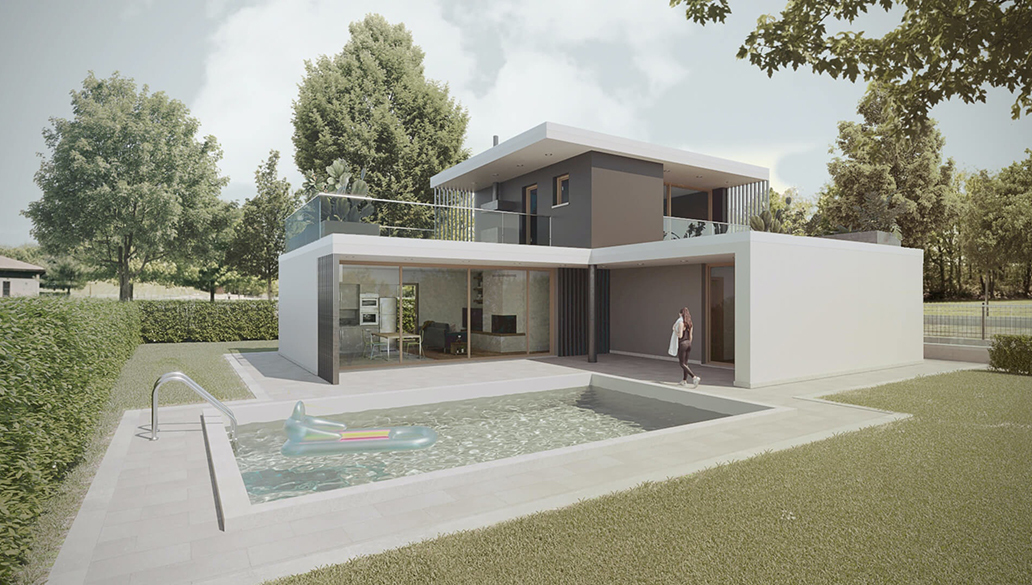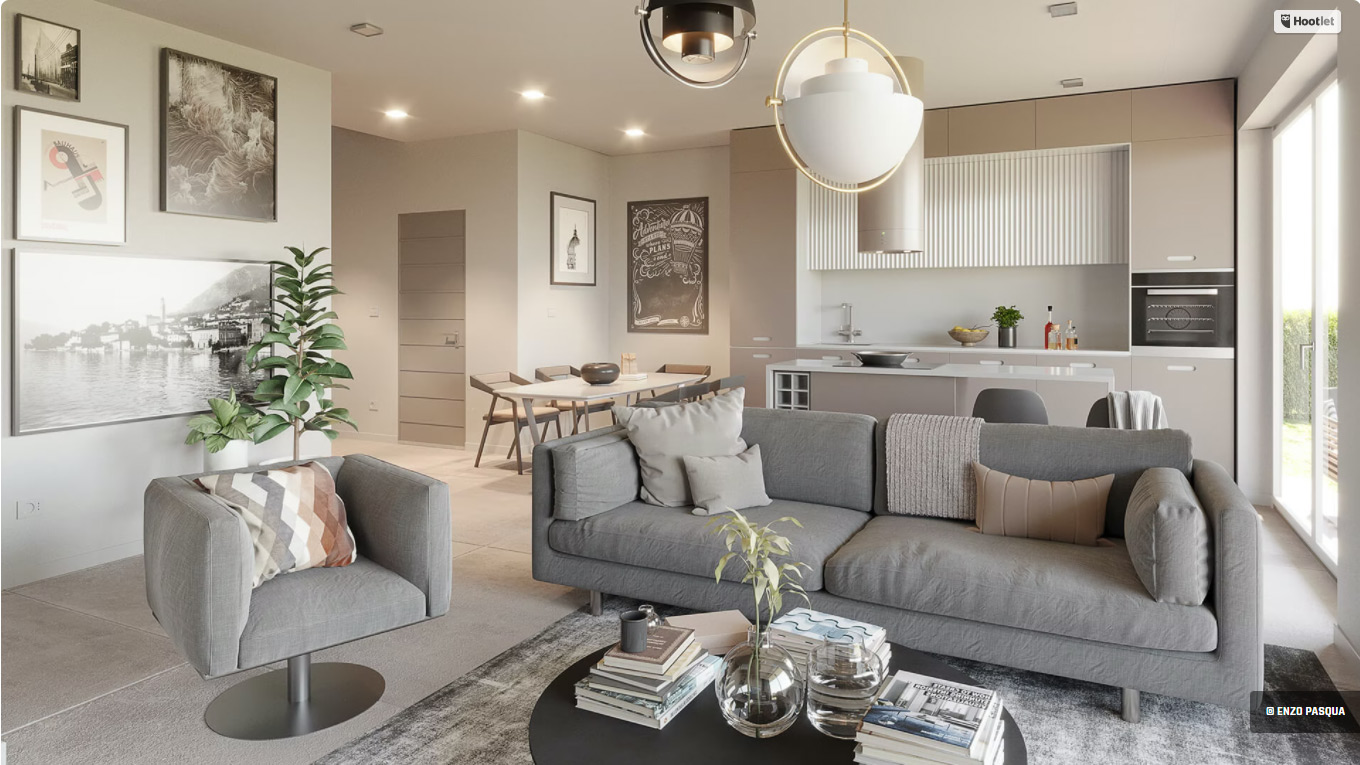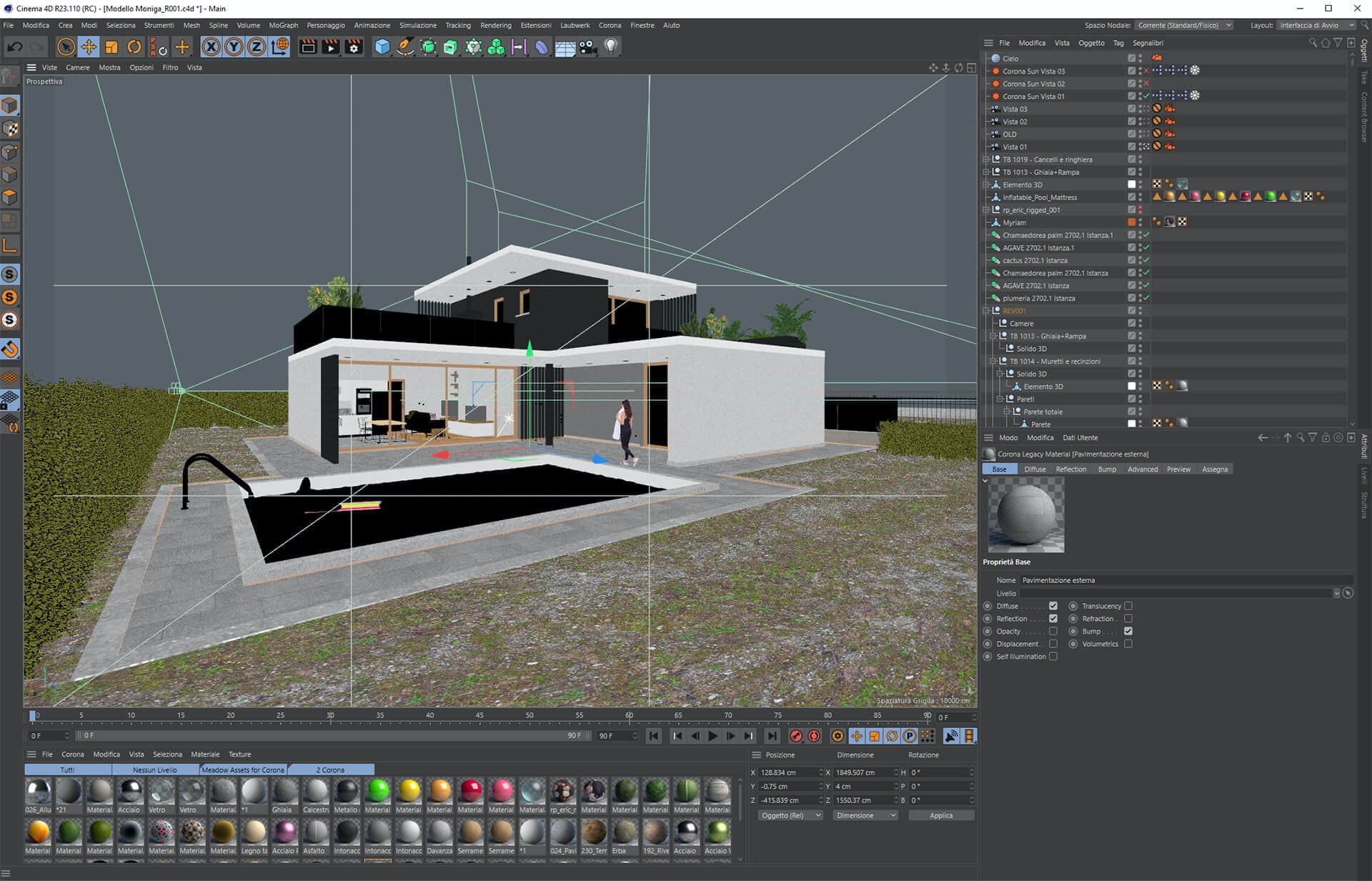Shaping the Experience: The growing importance of visualization tools for construction
Visualization today is an important tool for all stakeholders during the design and construction process and brings many advantages - not just for architects and engineers, but also for their clients and for investors.
Author
Dr. Sassi Sassmannshausen
Dr.-Ing. Sassmannshausen's creativity is rooted in a triangle of art, science, and engineering and he is working since the 90’s with Nemetschek Software, making him a worldwide renowned Maxon Master Trainer.
This article belongs to the collection Media & Entertainment
To the topic pageThe early stages of a construction project are a bit like selling dreams: sketches and scribbles give a glimpse of how fantastic a piece of architecture will possibly look like one day. However, the further we proceed with a construction project, the less likely it will become that stakeholders and decision-makers will base their decisions and approvals on dreams and ideas alone. This is where visualizations come into play. Essentially, they improve communication by bringing clarity to the project – everyone can see the end result.
Visualization today is an important tool for all stakeholders during the design and construction process – not just for architects and engineers, but also for their clients and for investors. Impressive architectural visualizations of a building or structure can help bring the project to life for clients, during the design stage and prior to awarding a contract. It also offers benefits during the design stage, when the impacts of material and component choices can be easily seen and any issues addressed early, for example. Having powerful visualization tools is therefore of significant benefit to all project stakeholders. The good news is that with professional 3D BIM software, creating stunning imagery and animations is no longer limited to graphic designers.
Visualization brings many advantages: A realistic visualization can help clients imagine what the completed structure will look like, as well as how the space will look and feel and how everything will fit into the surrounding environment. Being able to explain the design intent so clearly can be a major advantage, making it easier for clients to see what they will get from their investment.
The more abstract sketches are, the more likely everyone connected to the project will fill the missing parts with unique ideas. This leads to a quick agreement about the project in this relatively cheap phase. Later, when things become more expensive and real, the client might not find the previous ideas in the growing reality of the project.
Changes are now very costly. Excellent and detailed visualizations are beneficial for the needed expectation management. Here it solves problems in the "blueprint state" of a project. This allows everyone to work on the same project instead of individual ideas, saving time and money.
Another benefit of visualization is that it makes it easier to identify and discuss issues. For many stakeholders, it is much clearer and easier to understand a 3D visualization than trying to imagine how a building will look like based on a 2D line drawing. During the design, it is easy to trial different options – such as materials and components, door and window openings, or even color schemes and other details – before a choice is made and finalized. With high-quality visualizations, these decisions can be changed before they are installed on site, which can be costly to change at a later stage.
While in the past, architects and designers spent hours to create different sketches, views, or variations of a concept, this can now be done digitally with the change of just a few parameters. This means designers and architects can offer their clients a much larger variety of options to choose from nowadays. The ability to view and discuss various renderings directly in a virtual environment also helps to reduce construction time – which, in turn, leads to cost savings.
Similarly, it is also beneficial to be able to visualize the finished design within its surrounding environment. Topographical surveys and point clouds can be imported and a terrain model created, which can then be used to see how the structure fits on site. Even lighting conditions or the different seasons can be simulated and checked. This way, the architect or engineer can make any changes if needed before the project is built and impossible to move.
Finally, it is also possible to use tools to create 3D photos or even virtual reality images that provide an immersive experience. These tools will simulate the 3D environment, allowing stakeholders to get a feel for the room sizes and layouts and make any necessary changes early on before the project is undergoing construction.
If powerful visualization tools such as Cinema 4D or Redshift Rendering are directly connected to the design software like for example Allplan, Graphisoft’s Archicad, and Vectorworks. designers, architects, and many other stakeholders can create efficient workflows and easily produce static or dynamic visuals, tailored to their particular needs.
Creating stunning images is not just about impressing an owner or investor, they also help increase communication, lead to cost savings, and improve quality. The right first time approach is the key to delivering projects successfully, delighting clients, and building a strong reputation.

















